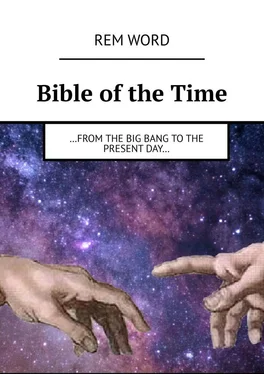The first Hebrew tribes, in the manner described in the Bible, or in some other way, appear in the territory with the general name Canaan forty-two centuries ago. This is followed by a series of periods of assimilation or isolation of the Jews among other nations.
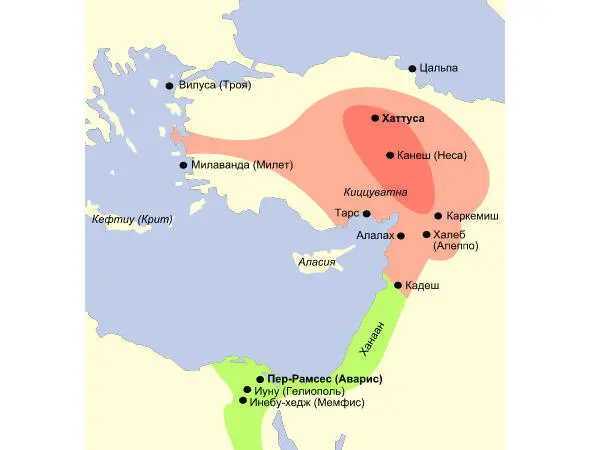
Canaan, «the Promised Land» on the map of the Ancient World
The Epoch of Judges, interpreters of the law, lasts three hundred years, marked, at the end, by a certain decline in morals. The last of the Judges, Samuel creates a kind of school of prophets who speak the truth to the rulers in the face, not caring about the consequences. He anoints the kingdom of the chosen one of God, Saul. His successor, the shepherd David, who ascended to the very pinnacle of power because of his decisive disposition, has the capital in Jerusalem. Having finally dealt with the Ammonites, Philistines and other tribes that have inhabited Canaan since ancient times, he created a mono-ethnic Jewish state. The son of David, Solomon erects the First Temple – the only legal place for God to serve among the Jews. After the death of the king, the country is divided into Israel with the capital Samaria, where ten tribes of Jews find shelter and Judea with the center of power – Jerusalem.
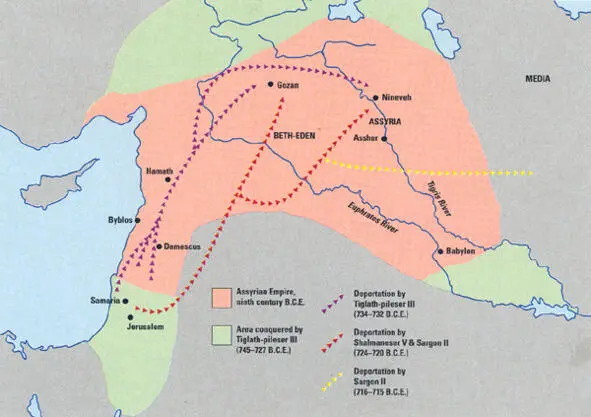
Judea (Jerusalem), Israel (Samaria) and Assyria (ancient capital – Ashur), eighth century BC
Seven centuries BC. The first superpower of antiquity, Assyria, turns Israel into a scorched desert. Ten of the twelve tribes are taken prisoner by the invaders. Their traces are lost. Later, Judea, which remained aloof from the battle, includes Babylon into its empire. Residents are taken away into slavery. After some time, thanks to the beloved wife of King Esther, the Babylonians declare them equal and allow them to return to their historical homeland. The liberated Jews build the Second Temple on the ruins of the First Sanctuary. Another one and a half centuries of relative peace and Judea falls under the control of the Greek dynasty of the Ptolemaic-Seleucids. The uprisings directed by the Hasmonean clan and the branch of Maccabees emanating from it (a nickname that has become a household name for the implacable defenders of the faith), dissatisfied with Hellenization, make the Hasmonean kingdom quite independent. But internecine wars break out. To resolve all issues, as an arbitrator, the Jews call on the great Wrath Pompey. All this ends with the fact that the Roman commander includes Judea in the structure of his Republic.
In the sixty-sixth year A.D. The First Jewish Revolt breaks out. The emperors of Rome, father and son, Titus and Vespasian, are systematically carrying out reprisals against the rebels. In Jerusalem, six hundred thousand inhabitants perish from hunger, in internecine massacres and at the hands of legionnaires. Another fifty years of dull discontent and under the Emperor Trajan follows the Second Uprising. As a result, the Romans destroyed Jerusalem and founded the Hellenized city of Aelia Capitolina in its place.
Fifteen years later, during the reign of Emperor Hadrian, who forbade circumcision so important for the Jews, the rebellion of Shimon Bar-Kokhba breaks out. The Iron Legions capture the last stronghold of the rebels – the mountain fortress of Betar. Judea completely loses its autonomy. The surviving 30% of its inhabitants are settled throughout the Ecumene.
A new colorful smear in our head – China, two hundred years BC. After the death of the great and terrible Emperor Shih Huang Ti, Confucianism (the school of learned scribes) was revived in the new Han Empire, a philosophy that still replaces the Celestial Empire.
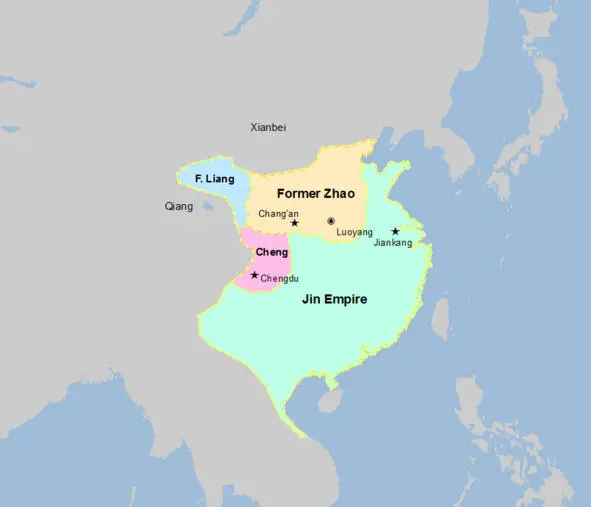
Jin Empire
Han ruled for six hundred years. It is replaced by the Jin dynasty. In the fourth century A.D. e. North China is invaded by the Huns. For two centuries, the most powerful Chinese gene pool turns aliens into true Chinese. The next dynasty restores the state as if nothing had happened.
A new series of wars, enlargements, fragmentation of kingdoms, leads to the emergence of the great, flourishing Tang Empire (636—907) in the east of modern China. This dynasty controls part of Central Asia, Sogdiana, the territory of present-day Tajikistan, Turkmenistan and Uzbekistan. A native of one of the regions, the border governor in the service of the Yellow Emperor An Lushan convinces the monarch to replace the officers of the titular nation at the court with mercenaries from the steppe personally loyal to the Sogdian. The further course of events is not so difficult to predict. An Lushan almost without hindrance, using the resources of a huge state, forms an army tied only to him. When the masks are thrown off, the indigenous Chinese can only shrug their hands sadly. The insidious alien makes a trip to the capital Chang’an (now the provincial Xi’an, the location of the famous Shi Huang Terracotta Army).
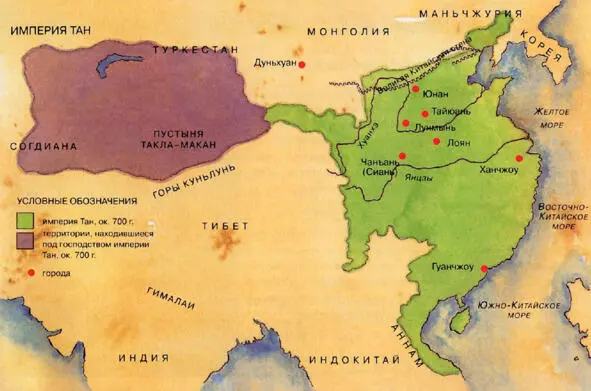
Tang Empire, 7th century AD e. Dangerous territorial acquisitions. The Tang empire is marked in green, the territorial acquisition of Sogdiana, which destroyed the metropolis, is in purple.
There should be a whirlwind of wars of all against all, for the state, the emperor, your family and just food. Women and children become soldiers or simply murderers. The greatest city with a population of millions, reminiscent of a chessboard stretching beyond the horizon, Chang’an is turning into a heap of ruins. Look! All roads and shoulders are littered with corpses. This water in lakes and rivers retains its purple color for months. Don’t try to quench your thirst with it. According to census takers and tax collectors, 50 million China is losing 36 million of its inhabitants. Perhaps a significant part of them do not die, but move to other areas. However, the An Lushan uprising is considered the largest post-WWII armed conflict in history in terms of casualties.
During the Song dynasty, in the twelfth century, China was invaded by the Manchu Jurchen tribe. The Celestial Empire is entering a new round of assimilation. At the beginning of the thirteenth century, a 300,000-strong army of even more brutal invaders invades from the North. With each new campaign, the Mongols of Genghis Khan are advancing more and more south. Trying to fight back, the Chinese widely use multiply-charged crossbows, powder charges, missiles, and primitive artillery. Millions of people die in fire and smoke. The capital of the Celestial Empire Zhongda – modern Beijing surrenders in 1264. 16 years later, the whole of China falls under the hooves of Mongolian horses. The grandson of Genghis Khan, Kublai Khan, proclaims the creation of the Yuan dynasty in the Great Yuan State. At the same time, four Mongol ulus left the single rule of the Horde.
Mongol expeditions to Japan and Vietnam have not met with much success. In the first case, this happens due to irresistible external reasons – «divine wind». In the second, because of the desperate resistance of the Vietnamese. Ciao paper banknotes are being massively introduced. Paper innovation is not always a sign of progress. The Chinese economy is in a fever. Most of the Chinese become slaves, in the Mongolian dialect, arats (commoners). Craftsmen even lose their craft skills. Agriculture and trade are declining. The complex irrigation system ceases to function.
Читать дальше
